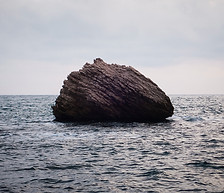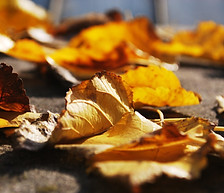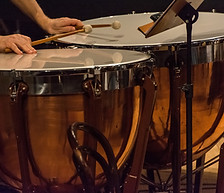
"I want to share my music so that people will perform it because I believe in its artistic and educational merit."
- Dr. Jeff Jordan
I find myself composing with a wide range of school to collegiate level musicians and bands in mind.
Below is a selection of compositions with varying grades, ensemble, and small group options.
Feel free to reach out to me with any type of commissions you have in mind.


FEATURED COMPOSITION
FANFARE FOR
CHARLES DREW
This work is one of three fanfares composed to educate young players about the significant accomplishments of African-Americans who may not be as well known to them.
Dr. Charles Richard Drew (1904-1950) was African-American physician who developed the methods to process and store plasma, or blood without cells.
Because plasma lasts much longer than whole blood, it could then be stored for extended periods in what are now commonly called "blood banks."
Dr. Drew directed the blood plasma programs of the United States and Great Britain in World War II, but resigned after a ruling that the blood of African-Americans would be segregated.

BAND COMPOSITIONS
AND A TIME
GRADE 3
AVAILABLE FROM: C. ALAN PUBLICATIONS
AND A TIME begins in an evocative mood, portraying those emotions one encounters when contemplating potentially life-changing decisions. Daily routines, with the issues and conflicts that often generate a “grass is greener” mentality, are musically developed in the agitated middle section.
The tranquil closing recalls earlier material in an affirmation of
those values which retain true importance in one’s life. and a
time is profiled in Volume Six of Teaching Music through Performance in Band.
THE ADVENTURES OF WYNDE DING WHAM
GRADE 4
AVAILABLE FROM: C. ALAN PUBLICATIONS
As inferred by the title, The Adventures of Wynde Ding Wham is a whimsical fantasia on an original theme. It is intended to introduce young players to the contemporary compositional practices of graphic notation, tone clusters, free time, improvisation, and odd meters.
Extended techniques, such as the brasses reversing the mouthpiece and blowing air through their instruments and vocalizations by the band members add to the colorful atmosphere. The tongue-in-cheek finale (along with the title) is a musical salute hat to the composer’s longtime friend and mentor, David R. Holsinger.
ANOTHER AND NO OTHER
GRADE 3
AVAILABLE FROM: THE COMPOSER
Another and No Other is an expansion of an earlier composition inspired by the Octavio Paz poem "Viento, Agua, Piedra (Wind, Water, Stone)." In the imagery-rich verses, Paz quietly describes the effect of each element on the other while retaining its own identity.
The title is drawn from the following stanza:
Each is another and no other:
crossing and vanishing
through their empty name:
water, wind, stone.
The work was premiered by the High Plains Music Camp Faculty Band on July 5th, 2021 under the baton of Dr. Lane Weaver.
A SONG FOR AUTUMN
GRADE 4
AVAILABLE FROM: THE COMPOSER
Autumn, for me, is rarely that imagined time of reflection and pastoral contemplation as, like most band directors, I am busy with starting a new school year and all the energy that process entails. However, the fall of 2016 along with the anticipation of 2017’s season proved to be a bit different. I had started the academic year mostly in a “normal” fashion with the exception of a good colleague and friend who had moved on from our campus after eight years. Shortly into the beginning of classes, I was diagnosed with a serious health problem which would eventually sideline me for the next eight months. Concurrent with that, a good friend and mentor passed away shortly after I left for treatment. Less than two months later, my father in-law passed away, leaving a devastating hole in our family. It was only faith, family and friends who got us through the year and by the spring, I felt that things were starting to return to normal (whatever that now is), but I knew that the upcoming autumn would bring more significant changes.
Those changes included my brother’s children going off to college as well as my own daughter getting engaged and also leaving town for the first time to attend graduate school. These were not unexpected changes, but also not easy ones as I realized our family dynamic was changing. Finally, one of my wife’s Aunt’s who had been an enormous support during my illness, passed away suddenly just a few days after we had a wonderful visit. Losing her felt like the ground was collapsing underneath me as she was such a rock of encouragement. Finally, our office manager, a dear and loving person, announced that she would be leaving at the end of the fall semester. Did I mention that we would be starting with a new marching band director, our third in three years.
While all this may seem like a lot to deal with, I hope that the music isn’t overly sad or melancholy, but comes across a sense of thankfulness (for the blessings with have), reflection (for the opportunities that make our lives worthwhile) and even hope (for the possibilities yet to come).
Music is a gift that I thank God for. I am blessed to share it with others.
EMPOWERED
GRADE 4
AVAILABLE FROM: KNIGHTWIND MUSIC
Empowered was composed in 2007 for the High Plains Band Camp Honor Band in celebration of the camp’s sixtieth anniversary.
The most difficult aspect of completing the piece turn out to be choosing the correct title. It was originally called Whoosh! as a description of the frantic pace typically experienced by students and staff during the week of camp itself. This name never seemed to fit the heroic and often complex nature of the piece and T struggled for several years to find an adequate replacement, even withholding it from publication. In the summer of 2011,
I programmed the work again with the camp Honor Band and held a contest with the students to come up with a new name.The creativity of one student in particular secured the new title and Whoosh! became Empowered.
FANFARE FOR CHARLES DREW
GRADE 1.5
AVAILABLE FROM: THE COMPOSER
This work is one of three fanfares composed to educate young players about the significant accomplishments of African-Americans who may not be as well known to them.
Dr. Charles Richard Drew (1904-1950) was African-American physician who developed the methods to process and store plasma, or blood without cells. Because plasma lasts much longer than whole blood, it could then be stored for extended periods in what are now commonly called "blood banks."
Dr. Drew directed the blood plasma programs of the United States and Great Britain in World War II, but resigned after a ruling that the blood of African-Americans would be segregated.
FANFARE FOR MAE JEMISON
GRADE 1
AVAILABLE FROM: THE COMPOSER
This work is one of three fanfares composed to educate young players about the significant accomplishments of African-Americans who may not be as well known to them.
Mae Carol Jemison (born 1956) is an American engineer, physician, and former NASA astronaut. She became the first black woman to travel into space when she served as a mission specialist aboard the Space Shuttle Endeavour.
FANFARE FOR HIRAM REVELS
GRADE 2.5
AVAILABLE FROM: THE COMPOSER
This work is one of three fanfares composed to educate young players about the significant accomplishments of African-Americans who may not be as well known to them.
Hiram Rhodes Revels (1827-1901) was the first African-American to serve in the United States Senate, elected to represent Mississippi in 1870. He was also a barber, a minister and President of what is now Alcorn State University.
FLOURISH FOR OLANA
GRADE 3
AVAILABLE FROM: DAEHN PUBLICATIONS
Flourish for Olana takes its name from Olana, the New York Home of artist Frederick Church. It is an Arabic word meaning “our place on high.”
The composer is deeply grateful to Dr. Jack Stamp for his generous guidance in the composition of this work as well as the wonderful recording.
GREATEST OF THESE
GRADE 4/5
AVAILABLE FROM: THE COMPOSER
Greatest of These started as a request for a solo voice work with Wind Ensemble. The rather daunting task of text selection gradually took on the idea of a personal journey experienced by the singer through understanding, acknowledgement, realization and transformation, all expressed in a variety of contrasting music styles.
I wanted the band parts to be approachable at the grade four level and not sound like mere accompaniment while the vocal part would allow for a soloist of exceptional ability to illuminate the text.
I would be remiss to not thank William Rukeyser, son of the late Muriel Rukeyser, for his kind permission to use his mother’s poetry. It was, for me, the essential element that bound together the composition.
THE GREEN BLADE
GRADE 3
AVAILABLE FROM: NEIL A. KJOS MUSIC CO.
The Green Blade is based on the French carol, “Now the Green Blade Riseth,” and is cast in the form of a theme and four variations. Following a brief introduction, the original Dorian melody is stated in the flutes over a light percussion background.
The first variation is march-like, the second takes on the character of a waltz and the third is a lyrical song utilizing the tune in inversion. The finale is a “variation on variations,” employing earlier melodic alterations in counterpoint with each other.
The work is dedicated to Kelly Konrad and the Lakeview Middle School Band, Sanford, Florida.
THE HEALING SWORD
GRADE 2
AVAILABLE FROM: C. ALAN PUBLICATIONS
While the Civil Rights movement may seem like a weighty topic to address in the span of a four minute work for young band, I felt that it was an important one, particularly in the anniversary year of Dr. Martin Luther King Jr.’s birth date (1929). Students presently in their middle school years and younger are certainly aware of Dr. King’s legacy, but may not have any knowledge of the turbulent years which encompassed it nor of the other brave individuals who helped drive this defining movement of the 1960’s. To that end, I have attempted to provide a musical snapshot of history that I hope will inspire curious students to learn more. The title is taken from a quote of Dr. King’s:
Non-violence is a powerful and just weapon. It is a weapon unique in history, which cuts without wounding and enobles the man who wields it. It is a sword that heals.
The two additional quotes spoken within the piece are fragments which are also taken from Dr. King’s speeches:
There comes a time when people get tired. We are here this evening to say to those who have mistreated us so long that we are tired; tired of being segregated and humiliated; tired of being kicked about by the brutal feet of oppression.
I have a dream that my four little children will one day live in a nation where they will not be judged by the color of their skin but by the content of their character
Five additional names are spoken in addition to that of Dr. King’s and may be voiced by members of the band or other individuals if desired. The name are those of five major figures in the advancement of the civil rights movement, some of whom did not survive to see its conclusion.
Rosa Parks: Considered to be the woman who sparked the movement’s beginning in 1955, she did so by her refusal to give up her bus seat to a white man.
Ruby Bridges: The first African-American child to attend an all-white school in the South, she spent a year as the only student in her classroom.
Medgar Evers: Instrumental in desegregating the University of Mississippi and prosecuting injustices against African-Americans, he was murdered in his driveway in 1963.
James Meredith: the first African-American student to attend the University of Mississippi in 1962. His enrollment resulted in campus riots and necessitated the sending of U.S. Marshals and Federal troops by President Kennedy.
Viola Liuzzo: A white woman actively involved in the civil rights movement, she was murdered by the Ku Klux Klan while driving protestors home from a march.
IN SPIRIT
GRADE 4+
AVAILABLE FROM: THE COMPOSER
This composition is dedicated to the memory of Jay Steinberg, clarinetist, educator and friend, who spent twenty-seven summers at the High Plains Music Camp in Hays, Kansas doing what he loved best–teaching and making music. His gifts inspired multitudes of campers as well as the hundreds of young players with whom he shared them during his forty-year tenure in the public schools of Lindsborg, Kansas.
The premiere was given on July 17, 2014 by the High Plains Music Camp Faculty Band–many of whom taught alongside Jay–for an audience of campers, many of whom had been Jay’s students during their earlier years.
– In preparation for release from Knightwind Publications –
RADIX
GRADE 4
AVAILABLE FROM: C. ALAN PUBLICATIONS
Radix was composed for the Honor Band of the 2008 High Plains Band Camp held on the campus of Fort Hays State University in Hays, Kansas.
The premiere performance was given on July 26, 2008 with the composer conducting. At the suggestion of the composer’s friend David Holsinger, minor revisions were subsequently made and the newly edited version was given its first performance by the Fort Hays State University Wind Ensemble in October of 2008.
REDITUS
GRADE 4
AVAILABLE FROM: THE COMPOSER
Reditus (literally “return”) is a brisk fanfare composed in the spring of 2021 to celebrate the Fort Hays State University Band’s return to live performance after a nearly 14-month hiatus.
Although brief in duration, it nonetheless makes extensive use of retrograde (playing a theme backwards, which seemed appropriate given the composition’s purpose), inversion and imitative counterpoint.
Reditus was premiered by the Fort Hays State University Band on May 7th, 2021.
– In preparation for release from Knightwind Publications –
SUNSTORM
GRADE 5
AVAILABLE FROM: C. ALAN PUBLICATIONS
Sunstorm is a virtuoso fanfare intended as a concert opener. It demands accomplished technical skill, particularly from the horns, low brass and percussion. The work was originally scored for brass choir and percussion and later transcribed for full band. Both versions are in the C. Alan Publications Catalog.
The band transcription was premiered by the Fort Hays State University Wind Ensemble in December of 2004 and subsequently performed at the Kansas Music Educators Association All-State Convention in 2005.
SURE STARS SHINING
GRADE 4
AVAILABLE FROM: THE COMPOSER
Sure Stars Shining was commissioned by Pine View High School, Sarasota, Florida and their director, Victor Mongillo in celebration of the school’s 50th year.
The title is taken from a line in the Sara Teasdale poem, “There Will Be Rest” and reflects Pine View’s ongoing mission as a school for the gifted. The premiere took place in December, 2018 and was conducted by the composer.
Sure Stars Shining features two principal themes which are developed through a variety of compositional techniques including timbre, imitation, and rhythmic variation. Optional parts are included for piano and harp.
– In preparation for release from Knightwind Publications –
SYNERGY
GRADE 3+
AVAILABLE FROM: NEIL A. KJOS MUSIC CO.
When I am asked what inspires me to compose, my answer is almost always the same: a deadline. This answer was probably never more apropos than in reference to my first published piece, Synergy.
In the spring of 1994, Nelson Thornton, a good friend, supporter and former band parent, suddenly passed away. With just a few days before my high school band’s end-of-year concert, there was little we could do to suitably honor his memory. We were fortunate enough to have the first movement of Johannes Brahms’ A German Requiem already on the program and while we did dedicate the performance to his memory, I wanted to do more. This man had served as President of our Band Parent Organization at a crucial time for our students and I felt that a more significant memorial was due him.
John Lennon once said that “Life is what happens to you while you are busy making other plans.” Life in this case included teaching, marching band, contests and all those other things that make the year go by too fast for a band director who was also trying to compose. It was now the spring of 1995 and I suddenly realized that the senior class I was about to graduate would be the last group of students who had personally worked with Nelson. I set to work immediately on a piece for band–my first one composed with computer software—and after several weeks of late nights was able to place parts (albeit ones lacking dynamic markings as I was still learning how to do that) in front of the band. They read it, rehearsed it and performed it beautifully on our spring concert with Nelson’s wife and children present.
During the summer, I took Synergy to a reading session held at the summer convention of the Florida Bandmasters Association. The keynote speaker for the convention was Eugene Corporon, Director of Wind Studies at the University of North Texas, who had also agreed to serve as the bass drummer for the reading band. After its performance, he was kind enough to suggest several publishers to whom I might submit the work. I started at the top of the list with Kjos Music, a large and established company from whom I was sure I would receive a hasty rejection letter. To my complete surprise, they accepted Synergy and started me on my career as a published composer. I will always be grateful to Professor Corporon for his help, but even more grateful that my first work in print is a tribute to a good friend who served as a great role model for young people.
SYMPHONY No. 1 | A.D. 1968
GRADE 6
AVAILABLE FROM: THE COMPOSER
It seems that a common trait among composers is the aspiration to write a “big” work such as a symphony, opera or a piece for choir and orchestra. As a student of Beethoven, Brahms, Mahler, Vaughan Williams and many others, I too, felt this aspiration.
Thus, the Symphony No. 1 began taking shape in 2018 using a program I had thought about for many years, the pivotal events of the year 1968. However, despite its descriptive titles, the work is not meant, for the most part, to be a musical depiction of the events cited, but rather an impression formed by a ten-year-old mind and filtered through fifty years of reading, reflection and observation.
I. Prologue Past - Listen Here | Score Sample
Borrowing its title from Shakespeare’s The Tempest, the opening movement attempts to juxtapose the seemingly disparate emotions generated by progressive dissatisfaction with the status quo, shared optimism and a bohemian spirit of revolution.
II. Kings and Princes - Listen Here | Score Sample
The second movement’s title refers to the two seminal figures of 1968, Dr. Martin Luther King, Jr. and Senator Robert Kennedy, both of whose lives and tragic assassinations just months apart had a profound impact on history.
The distinct and significant approaches of each man are represented in a highly contrapuntal texture which often takes on the characteristics of a double fugue. A resolute march variation on the material is interrupted by a violent episode, giving way to a lyrical choral-like melody stated in solo trumpet, then the full ensemble. The march resumes with even greater determination, but lapses into an eerie and enigmatic ending, wondering how many sacrifices are enough.
III. War and Civil Disobedience - Listen Here | Score Sample
The social and political protests that often originated from various and dissimilar sources in 1968 are brought to mind in this movement through striking chords, angular melodies and a disjunct 9/8 rhythm which is heard at the outset. Loosely following the classical Scherzo and Trio form, the music drives forward with a ferocious energy that occasionally gives way to brief passages of calm and even triumph. The opening themes return in an abbreviated form that push the movement to an uncompromising conclusion.
IV. Earthrise - Listen Here | Score Sample
The final movement takes its inspiration from astronaut William Anders’ photograph of the earth as seen from the Apollo 8 spacecraft during its lunar orbit on December 24, 1968. The tremendous challenge, courage and camaraderie necessary for such an accomplishment, as well as the enormous energy required, occupies much of the movement’s music before giving way gradually to a more peaceful mood. Near the end, a tranquil melody is introduced in the solo horn followed by brief thematic fragments from the Symphony’s earlier movements. A quiet chorale in full band closes the work.
THARSOS
GRADE 4
AVAILABLE FROM: NEIL A. KJOS MUSIC CO.
Tharsos, named after the Greek word for courage, is dedicated
to Dr. John Pozdro, the composer’s teacher, who taught for more
than four decades in the University of Kansas
Theory-Composition Department.
The initial idea behind the work was to create a piece in which the mallet instruments of the band were featured in a musically substantial format that was also technically accessible to less experienced players. As the composition progressed, the increased difficulty level determined a piece more appropriated to high school players and Tharsos was premiered in December, 1995 by the Seminole High School Symphonic Band.
TOO SOON FOR THUNDER
GRADE 4
AVAILABLE FROM: THE COMPOSER
Too Soon for Thunder was composed in the summer of 2015 and takes its title from a painting of the same name by American artist Kay Sage (1898-1963). Sage’s surrealist work, completed in 1943, was a result of her concern over the second world coming so soon on the heels of the first.
The musical version, while not attempting to literally depict extra-musical ideas through standard notation, seeks to create a work built around the idea of conflict. Whether this conflict is personal/familial, nation or global, the listener will need to decide for themselves.
– In preparation for release from Knightwind Publications –





















